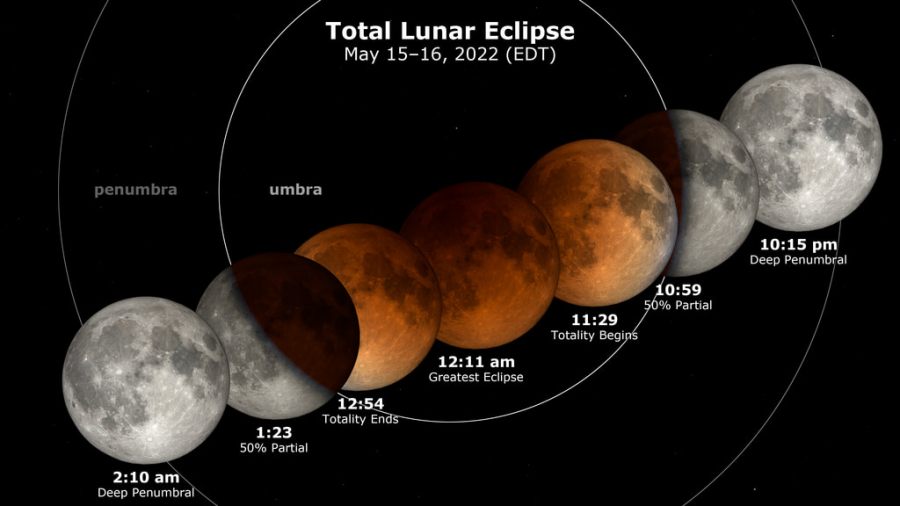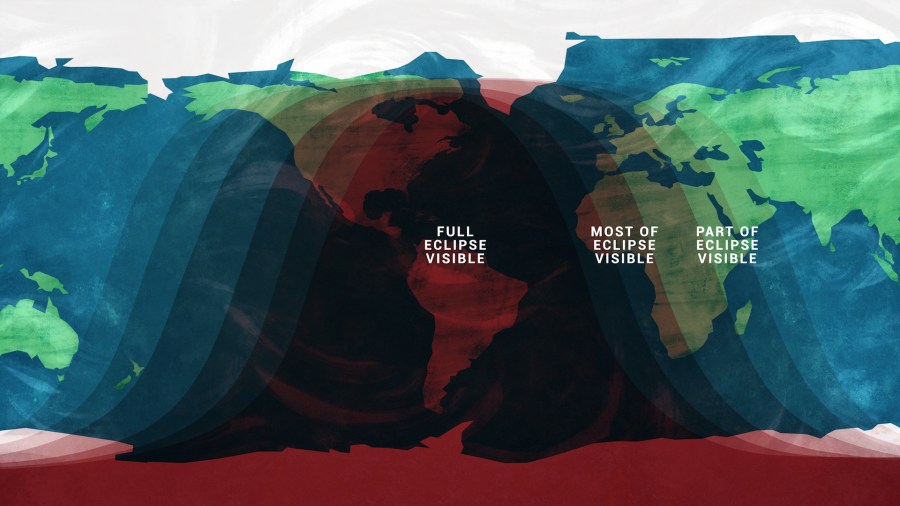TAMPA, Fla. (WFLA) — A total lunar eclipse of the Flower Moon will offer a dazzling spectacle in the sky for most of the United States this weekend.
The Flower Moon is what the full moon is known as in the month of May. This month’s full moon peaks in the overnight hours between Sunday, May 15 and Monday, May 16.
A full moon on its own can be a brilliant sight to see on its own, but this weekend’s will be even more stunning with a reddish glow thanks to the total lunar eclipse Sunday night.
A lunar eclipse happens when the moon passes into the Earth’s shadow.
“In a total lunar eclipse, the entire moon falls within the darkest part of Earth’s shadow, called the umbra,” NASA explains on its website. “When the Moon is within the umbra, it will turn a reddish hue.”
That reddish color is why the moon is sometimes referred to as a Blood Moon during eclipses.
When to see the eclipse
According to NASA, the moon will start moving into the Earth’s shadow just after 9:30 p.m. ET on Sunday, May 15. The total eclipse won’t be visible, however, until about 10:30 p.m. when the moon starts to enter the full shadow of the Earth.
Eclipse totality, when the moon is fully covered by the Earth’s shadow, will begin around 11:30 p.m. NASA says the peak of the eclipse will take place at 12:11 a.m. Monday.

The moon will start moving out of the Earth’s full shadow just before 1 a.m., will exit the full shadow at 1:55 a.m. and will then emerge from the partial shadow at 2:51 a.m., NASA says.
How to see the eclipse
“The eastern half of the United States and all of South America will have the opportunity to see every stage of the lunar eclipse,” NASA says on its website. “Totality will be visible in much of Africa, western Europe, Central and South America, and most of North America.”

You should be able to see the reddish color of the total lunar eclipse this weekend just with the naked eye. NASA does say binoculars or a telescope will enhance the view but are not necessary to see it. NASA also points out that, unlike solar eclipses, it is safe to look directly at the lunar eclipse.
The best place to see the eclipse is in a dark area away from city lights.
WFLA’s Max Defender 8 weather team has kept a close eye on Sunday night’s forecast and expects only a few clouds during the eclipse.
If you can’t watch Sunday night’s eclipse, NASA says it will provide coverage on its website and YouTube page.






